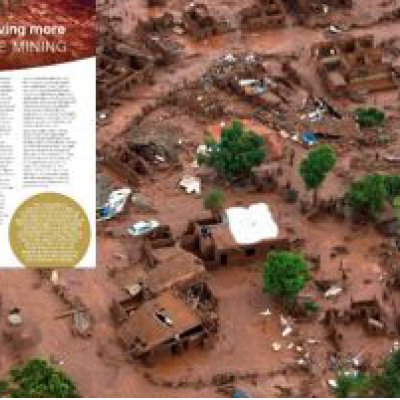 "IT IS NOT ALL DOOM AND GLOOM IN MINING. WITH INNOVATION AND SUSTAINABILITY OPENING UP NEW HOPE FOR THE INDUSTRY WRITES PROFESSOR CHRIS MORAN. DIRECTOR SUSTAINABLE MINERALS INSTITUTE"
"IT IS NOT ALL DOOM AND GLOOM IN MINING. WITH INNOVATION AND SUSTAINABILITY OPENING UP NEW HOPE FOR THE INDUSTRY WRITES PROFESSOR CHRIS MORAN. DIRECTOR SUSTAINABLE MINERALS INSTITUTE"
Leading practices in mining occur all over the world. It is not possible to list the implementation in any sensible fashion. However, I am cautiously optimistic that we are seeing increasing implementation of leading practices. I say "cautiously" because we also continue to see unacceptable events occuring that should not. Fatalities associated within the mining are too high, negative environment impacts are still far too often in evidence, and the number of conflicts between communities and mining are increasing.
The mining industry has highlighted the importance of one area above all others: the safety of the workforce. There has been a very significant decrease in fatalities and injuries acress the industry. There is no case for complacency on this, but it is a very good outcome and has been driven by intense research, development of pragmatic approaches and workforce education, and gradual embedding into the culture of mining.
Technically, we are now able to conceive significantly better ways to undertake mining and metals refining. We are by no means able to implement all that we can conceive. One major constraint is the mining is very capital intensive to get started. That is, a mining company must generally make a very large upfront investiment in manufactured capital (plant and equipment) before any cash flows from the mine. This becomes a constraint in terms of innovation because it is not likely that future financial capital investiment will occur after the inital investment. This technology lock-in can last for decades for very large mines. Consequently, it can look, at any one point in time, that operating mines are not using the latest technologies and leading leading sustainablility practices.
It is also critical that we reuse the products of mining once we have gone to the significant efforts required to win them from the earth. This is more than just recycling what we can. It is important that society begins to take a very close look at the design of manufactured capital with a view to the reusability of the metals, in particular, that we embed.
Currently, we are becoming far more aware of the recovery of metals, but the problems associated with releasing these metals from things such as building and electrical wastes, are expensive and require far too much energy. We need to have a massive increase in collaboration between designers, engineers, scientists and those with governing responsibilities to create a step change improvement in metals recovery and reuse.
Another constraint might be termed the "mining company social contract with communities", A very important part of securing the formal and social license to operate for many mines is the employment opportunities for local people. If technology becomes available that could conceivably change the sustainability of the operation from an efficiency perspective, the employmentopportunties might decrease. In such cases, the mining company will need to reframe its social contract with the community.
Many opportunities exist in building human capital in the communities, such as education and business skills building, but they will be different from traditional direct employment. One might speculate that the best environmental stewards over the long term for a mining project would be the local community. So perhaps building the skills and supporting technologies for the community to be the environmental managers during operations and the stewards after mining would provide a long term social contract attractive to the communities?
Article appeared in the The Faculty of Engineering, Architecture, and Information Technology magazine "Ingenuity" - which is now available online at https://issuu.com/uqeaitfaculty/docs/uqe041-ingenuity_2016_fa-lowres



